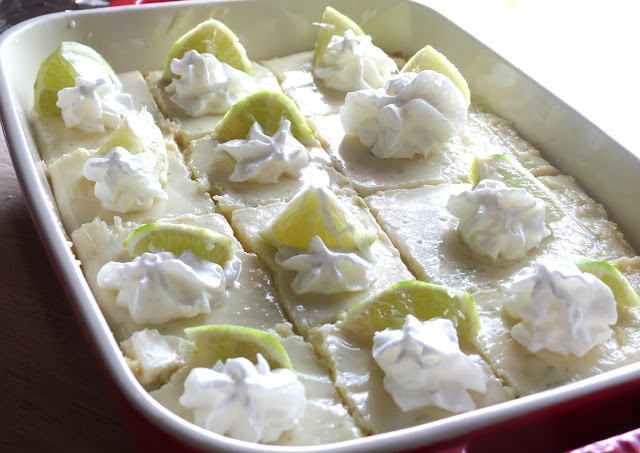Saturday, June 28, 2025
Mom's Perfect Devil's Food Cake

Monday, June 23, 2025
My Key Lime Bars
This is my perfect dessert for a hot summer day. Cool and refreshing and so easy to make. Why make a whole pie when you can easily make bars? And so, what if you eat one or two…or three or four? Who’s counting?
My Key Lime Bars
Graham cracker crust
- 2 cups graham cracker crumbs
- ⅓ cup sugar
- 8 Tablespoons (1 stick) salted butter, melted
Filling
- 2 (14-ounce cans) sweetened condensed milk
- 5 ounces cream cheese softened
- ⅔ cup key lime juice (or use regular lime juice)
- 1-2 Tablespoons grated lime zest, more to taste
Preheat oven to 350°F. Line a 9 x 13 pan with parchment paper.
In a medium bowl, stir together 2 cups graham crackers, 1/3 cup sugar, and 8 Tablespoons butter until well combined. If too dry add another tablespoon of butter. Mixture should feel like sand and hold together.
Pour the crumb mixture into a 9×13" pan and firmly press into the bottom using a 1/4 measuring cup. Bake 6-8 minutes.
While the crust is baking, make your filling. In a medium bowl, mix together the 2 cans of condensed milk, 5 ounces softened cream cheese, 2/3 cup lime juice and a Tablespoon of lime zest. Taste and add more lime zest if you'd like it more tart. Pour mixture into baked crust.
Bake in preheated oven for 6-8 minutes keeping an eye on it so it doesn’t get brown. Use a cake tester to see if it comes out clean when placed in the middle. It’s done when pinhole bubbles burst on the top of the pie.
Allow to cool for at least an hour and then place in the refrigerator, until ready to serve (best served chilled).
Slice chilled bars. Garnish with whipped cream and lime slices or lime zest if desired.
So good! So easy! So delicious!
Photography is the property of and copyrighted to Welcome Home.












